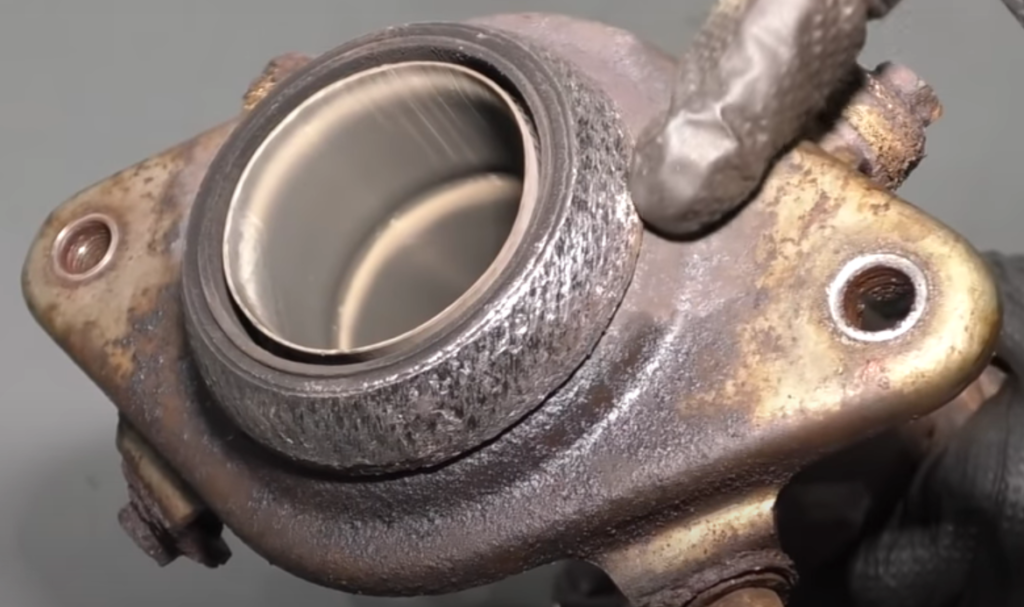
What Are Exhaust Manifold Gasket Leak Symptoms?
If you hear a clicking or ticking noise under the hood when starting your car or truck, that usually disappears after the engine warms up, it could mean there’s an exhaust manifold leak due to a cracked or broken exhaust manifold or broken exhaust manifold gasket.
This article covers the signs and symptoms of a leaking exhaust manifold, how to diagnose an exhaust manifold, and how to find an exhaust leak and an exhaust manifold leak.
What Is an Exhaust Manifold and Where Do I Find It?

The exhaust manifold is a part of the exhaust that mounts directly to the engine. It’s where combustion gases from combustion first exit the engine before they hit the catalytic converter and muffler.

Some exhaust manifolds are easy to find and others have covers or heat shields for protection from the heat exhaust manifolds can emit. If diagnosing an exhaust manifold for an exhaust leak, the shield will need to be removed.

How to Check for an Exhaust Leak
Sometimes exhaust leaks are not so obvious or easy to find. A good method is to listen to where the exhaust leak sound is coming from to determine if you should start at the front or rear of the vehicle. The best way to check for an exhaust leak is to get underneath the vehicle. Ideally, the vehicle will be on a lift, but a jack and a couple of jack stands work too.
Steps to Check for an Exhaust Leak
- Cover the Tail Pipe with a Gloved Hand
Cover the end of the tailpipe with a glove over your hand and feel for pressure. If there is no pressure, there is a strong possibility there’s a leak in the exhaust.

- Have an Assistant Cover the Tail Pipe and Inspect the Exhaust for Leaks
Have an assistant place a gloved hand over the tailpipe and work your way down the exhaust with a gloved hand placed over it without touching it. Assuming they’re not hot, feel along the top and the bottom of the exhaust pipes for air escaping. Listen for noises at the joints or seams, working your way up to the exhaust manifold.

How an Exhaust Manifold Leak Sounds
Exhaust manifold leaks are most heard when the engine or the exhaust is cold. A loosely secured exhaust manifold or manifold gasket, or a cracked exhaust manifold can create a loud ticking noise under acceleration and usually when the vehicle is cold. When metal gets cold, it tends to contract, and when metal gets hot, it expands. Cracks or imperfections in the metal can be heard as exhaust fumes escape during this process, and also explains why the sound may disappear as the metal heats up.
How to Check for an Exhaust Manifold Leak
Mating Surfaces on the Exhaust Manifold

With the exhaust manifold removed, remove the gasket from the mounting/mating surface area. This area should be as smooth as possible. An increase in build-up or corrosion (raised and low areas) on this surface can point to where the leak might be. If there is white or black coloring in the lower area, that is likely where the exhaust leak is. This can happen if the hardware loosens and creates a gap between the gasket and the engine or the manifold, creating an opportunity for build-up or corrosion.
Outside Surface and Curves of the Exhaust Manifold

An initial crack on the exhaust manifold might be hard to see or noticed at first if the manifold has a protective shield. Exhaust manifolds tend to crack along the curves, so inspect these areas for cracking and splitting.

Check for white or black markings near these areas, as they can also appear from cracks. Inspect all sides of the exhaust manifold.
Donut Gasket and Downpipe

The donut gasket, found at the end of the exhaust manifold between the manifold and the downpipe, can also leak. This part usually has spring tension from spring bolts. The gasket tends to leak, and if the spring bolts loosen and lose tension, the exhaust can leak out between the two pipes.

Check the downpipe for cracks or splits with the exhaust manifold removed by holding a flashlight on the outside and seeing if light travels through.
Mating Surface on the Engine

Check the mating surface of the engine and exhaust manifold. Sometimes build-up or corrosion occurs on this surface or the gasket breaks and dissipates. Inspect the gasket for dark areas of soot, which indicates exhaust fumes are seeping through. The bolts in this area can loosen and also create a leak. Like the gasket, a sign of leaking in this area is black soot around the mating surface of the engine.
We recommend removing and inspecting a gasket from this area if there is one after the exhaust manifold is removed. During reinstallation, clean this area of the engine and the mating surface on the exhaust manifold. Then replace the exhaust manifold gasket with a new one.
What Causes an Exhaust Manifold Leak?
Exhaust manifolds usually crack from the intense heat they take on from the combustion process and are one of the hottest parts of the exhaust. Since they tend to experience such high and low temperatures from the heating and cooling process, the more the metal expands and contracts the more there’s a chance of the metal cracking over time.
How to Replace an Exhaust Manifold or Exhaust Manifold Gasket
To see how to remove an exhaust manifold, exhaust manifold gasket, and how to clean the mating surfaces, this video shows the steps for replacing an exhaust manifold gasket on an 07-10 Hyundai Elantra. For videos specific to different years, makes, and models, check out 1A Auto’s how-to videos.
Shop Parts Featured in This Article
Related Content

